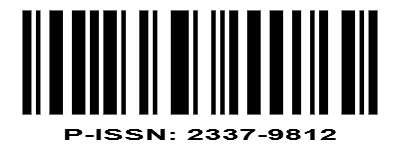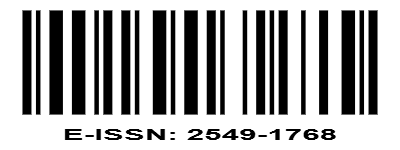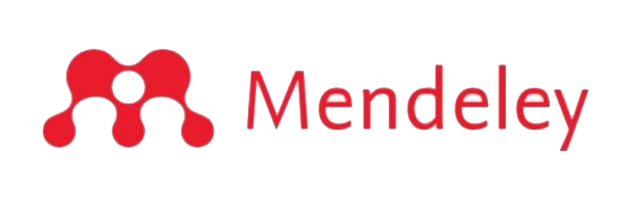Uji Daya Hambat Beberapa Ekstrak Bahan Alami Terhadap Pertumbuhan Cendawan Pyricularia grisea
DOI:
https://doi.org/10.22373/biotik.v6i2.5611Keywords:
Pyricularia grisea, natural extract, bay leaf, ketapang leaf, kaffir lime leaf, zone of inhibitionAbstract
Pyricularia grisea is a pathogenic fungus which causing rice blast disease that affected leaf, stems and rice panicles of rice plant. A possible option to reduce the use of synthetic chemical fungicide in managing the blast disease is by using plant natural active ingredients to inhibit the mycelial growth of Pyricularia grisea. This research evaluated the potential uses of bay leaf, tropical almond leaf, and kaffir lime leaf extract in inhibiting pathogenic fungus Pyricularia grisea. A Completely Randomized Design (CRD) with 3 replications and 4 treatments were used in this research. Work procedures included leaf extracts preparation, pathogenic fungi rejuvenation, growth media preparation and isolates plantation on PDA media. The parameter in this study was the diameter of the Pyricularia grisea inhibition zone. Data was analysed by analysis of variance (ANOVA) at 95% confidence interval with Duncan Multiple Range Test (DMRT) at 5% level (α = 0.05) as post hoc test if significant differences between treatments were detected using SPSS 16.0. The results of this study indicated that the highest concentration (100%) of each plant leaf extract was able to inhibit the mycelial growth of the pathogenic fungus Pyricularia grisea. The zone of inhibition of bay leaf extract was 1.77 mm, tropical almond leaf extract was 2.33 mm and lime leaf extract was 1.52 mm. The largest diameter of the inhibition zone was found on media with tropical almond leaf extract.Downloads
References
Sheila Desi Kharisma, Abdul Cholil dan Luqman Qurata ‘Aini (2013) Ketahanan Beberapa Genotipe Padi Hibrida (Oryza Sativa L.) Terhadap Pyricularia oryzae Cav. Penyebab Penyakit Blas Daun Padi, Jurnal HPT Volume 1 Nomor 2, Juni 2013,h. 20.
Kustianto, B, S.Kartowinoto, M. Amir dan Z. Harahap (1982). “Perbaikan Ketahanan Varietas Terhadap Penyakit Blas”, Dalam Puslitbangtan (ed.), pp: 127-138, Penelitian Pemuliaan Padi, Badan Litbang Pertanian. Puslitbang Tanaman Pangan, 1982.
Hendrajatin, A.A. (2009) Efek anti Bakteri Infusa Daun Salam (Eugenia polyantha Wight) Secara In Vitro Terhadap V. choleare dan E. coli Enteropatogen”. Majalah Kedokteran Bandung. Vol. 36, 2009, h. 2.
Gillman, E.F, Dennis G.W. (1994). Terminalia catappa (Tropical almond)”. Fact Sheet ST-626, 1994, h. 18.
Sembiring, dkk. (2003) Identifikasi Komponen Kimia Minyak Daun Salam (Eugenia polyantha) dari Sukabumi dan Bogor”. Buletin TRO. XIV(2), 2003, h. 10-16.
Yuliani, dkk., “Aktivitas antibakteri minyak atsiri daun jeruk purut (Citrus hystrix) terhadap Staphylococcus aureus dan Escherichia coli” , Pharmacom, Vol: 12(2), h. 4.
Montes LF. (1992) “ Candidiasis ” In : Moschella SL, Hurley HJ, editors. Dermatology. USA : Saunders, 1992 : 913-2.
Downloads
Published
Issue
Section
License
Authors who publish with BIOTIK: Jurnal Ilmiah Biologi Teknologi dan Kependidikan agree to the following terms:
- Authors retain copyright and grant the journal right of first publication with the work simultaneously licensed under a Creative Commons Attribution License that allows others to share the work with an acknowledgement of the work's authorship and initial publication in this journal.
- Authors are able to enter into separate, additional contractual arrangements for the non-exclusive distribution of the journal's published version of the work (e.g., post it to an institutional repository or publish it in a book), with an acknowledgement of its initial publication in this journal.
- Authors are permitted and encouraged to post their work online (e.g., in institutional repositories or on their website) prior to and during the submission process, as it can lead to productive exchanges, as well as earlier and greater citation of published work.











